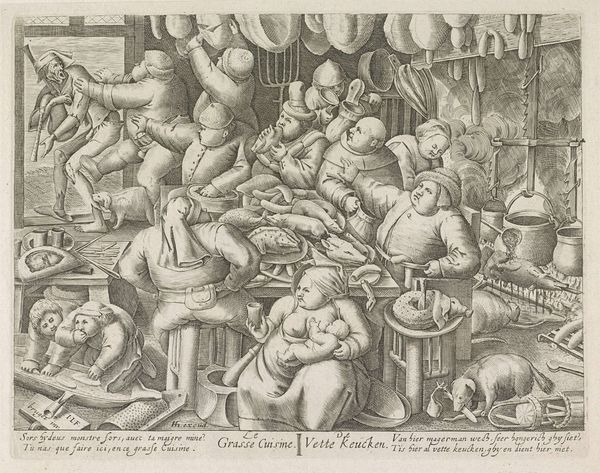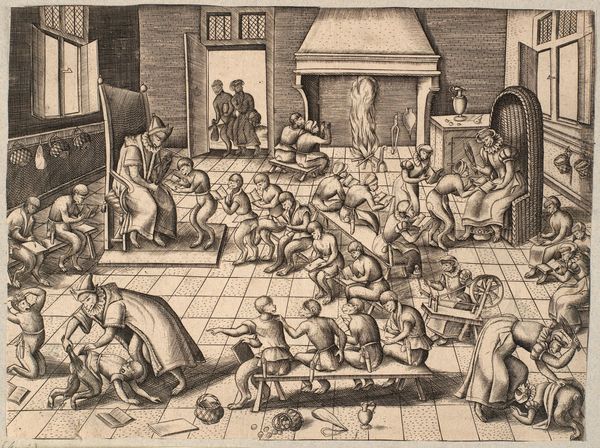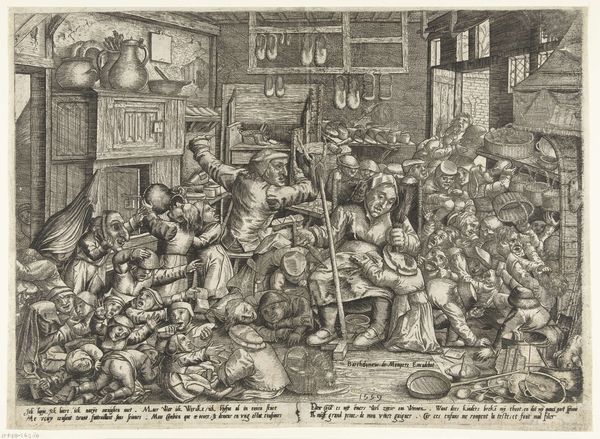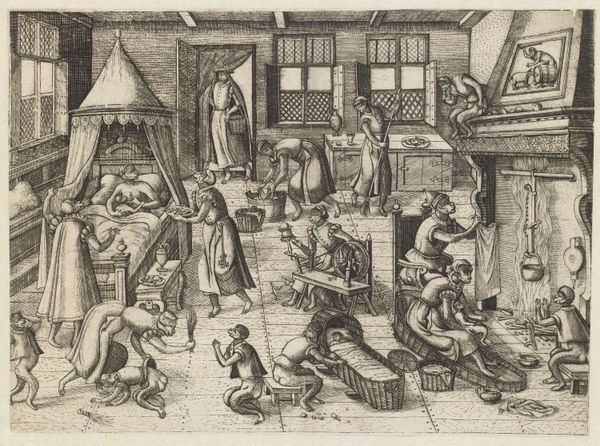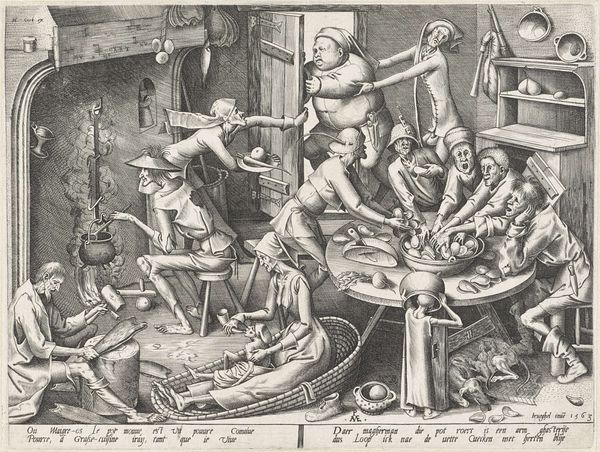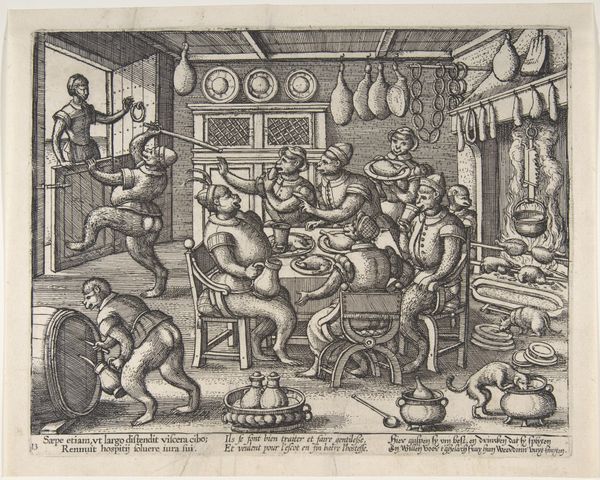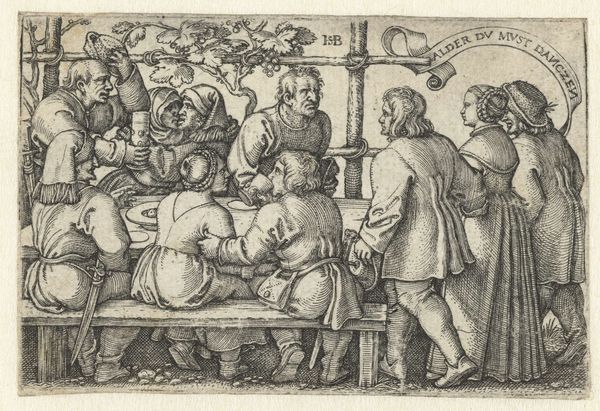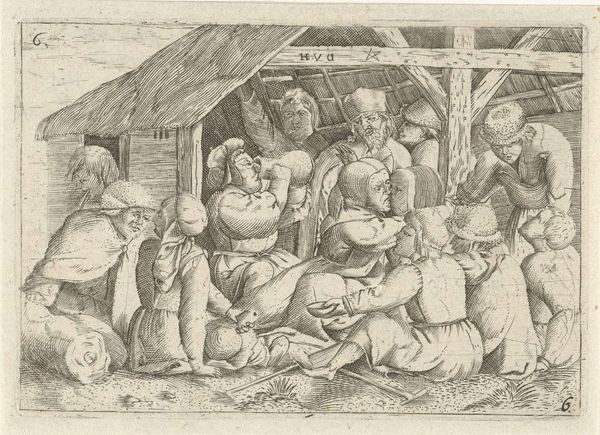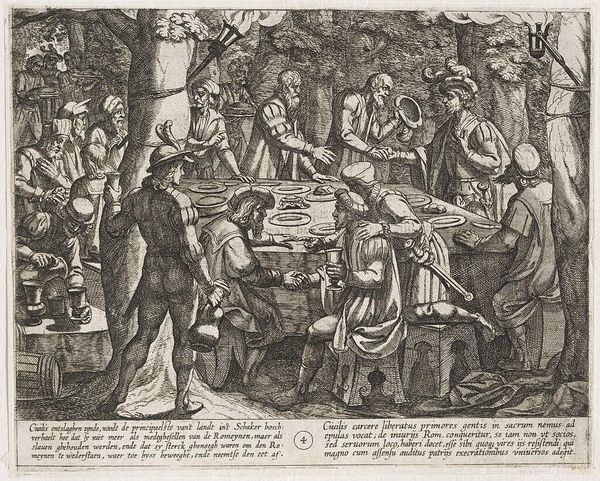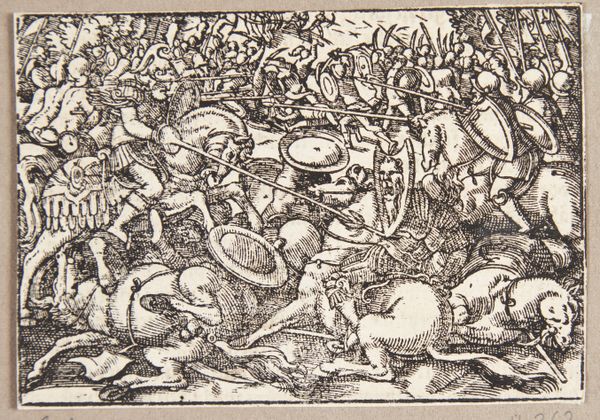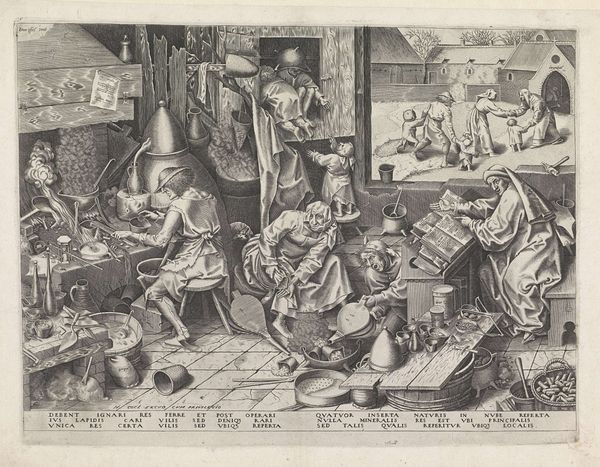
print, engraving
#
allegories
#
allegory
# print
#
landscape
#
figuration
#
form
#
line
#
genre-painting
#
history-painting
#
northern-renaissance
#
engraving
#
realism
Copyright: Public domain
Curator: Let's discuss Pieter Bruegel the Elder's 1563 engraving, "The Fat Kitchen". What are your first thoughts? Editor: It’s bursting with abundance – almost overwhelming! The figures are so plump, crammed into this space with all manner of foodstuffs. It evokes a sense of chaotic feasting, but also something a bit darker... gluttony, perhaps? Curator: Gluttony is indeed one reading. Look at the sheer volume of foodstuffs, the array of sausages, game, and overflowing platters. Bruegel, through the engraving process, highlights the abundance of resources through careful application of line creating depth in a complex image, almost certainly commenting on Flemish materialism during that era. He certainly wasn't celebrating frugality! Editor: Right, there is that overflowing energy of production you mentioned. What stands out to me is the cultural symbolism in the figures themselves. Their exaggerated bodies point to specific ideas. The figure suckling the child suggests sustenance, while the men grappling at the door perhaps represents wasteful conflict. What are they fighting over, or against? What desires, what greeds? Curator: We must consider too the labor inherent in this image. All these sausages, all this prepared game, required production. This abundance does not manifest from nowhere. Are we meant to think about exploitation when viewing this supposed revelry? This is no landscape. It's a still-life bustling with activity. Editor: And I would push you here. Not only the material, physical labor but also consider the cultural 'work' the image does to evoke feelings, or instruct with symbolism. The abundance of pots, hanging from the ceiling as implements and icons of the kitchen; they aren't merely tools but symbols of food and warmth, essential to social life. I read into them, the safety net they promise or once did before greed entered the picture... Curator: Very astute. I think seeing the symbolism that the equipment held contextualizes the experience these figures felt during production, preparation and celebration. Thank you. Editor: Thanks. Examining this from a point of symbols as well as physical labour unveils powerful contradictions around that era.
Comments
No comments
Be the first to comment and join the conversation on the ultimate creative platform.
